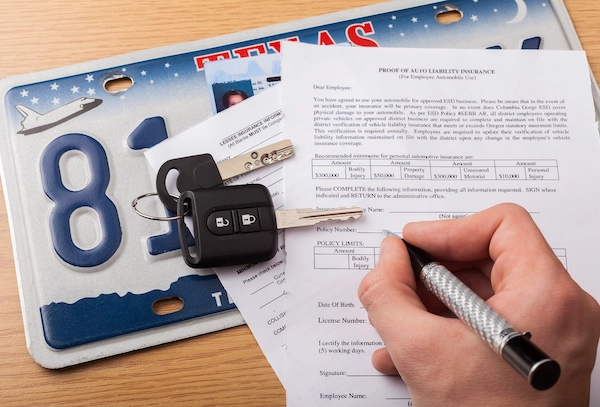Are you tired of staring at that old, worn-out car taking up valuable space in your driveway? Are you thinking where to sign title when junking a car?
If so, you’ll need to know where to sign the title. The wrong signature could invalidate the title and make it difficult to sell your car.
In this article, we’ll explain where to sign the title. So whether you’re ready to junk your car today or you’re just starting to think about it, read on for everything you need to know.
Contents
Understanding The Car Title

Knowing who owns the vehicle, where to find important information, checking for liens, ensuring title accuracy, and retaining a duplicate copy are all critical aspects of managing the title properly.
Title Ownership And Significance
The car title is a legal document that proves ownership of a vehicle. It serves as a certificate of ownership and identifies the person or entity who legally possesses the car.
Whether you’ve just purchased a car, inherited one, or are looking to junk it, the title is crucial.
It not only establishes your ownership rights but also allows you to transfer ownership when selling or disposing of the vehicle.
Locating The Title Information
The car title contains essential information about the vehicle and its owner. To locate this information, you need to check the physical title document.
Usually, the title will have the owner’s name and address, the vehicle’s make, model, year, and Vehicle Identification Number (VIN).
Additionally, it may have details about the issuing authority, title number, and any lienholder information if applicable.
Checking For Liens Or Outstanding Loans
Before selling or junking a car, you must ensure there are no outstanding liens or loans on the vehicle.
A lien is a legal claim against the car, typically by a lender who provided financing for its purchase. If a lien exists, the lender has a right to the car until the loan is paid off.
To check for liens, you can contact the lienholder or conduct a lien search through your local DMV or relevant authority.
Verifying Title Accuracy
Verifying the accuracy of the title is essential to avoid potential complications during any transaction involving the vehicle.
Errors on the title, such as misspelled names or incorrect vehicle information, can lead to delays or legal issues.
If you spot any discrepancies, it’s crucial to get them corrected by contacting the appropriate authority.
Retaining A Duplicate Copy
Losing the car title can be problematic, especially when selling or transferring ownership.
It’s essential to retain a duplicate copy of the title to ensure you can prove ownership when needed.
You’ll typically need to apply with your local DMV to obtain a duplicate title and provide relevant documentation.
Steps To Sign The Title
Reviewing State-Specific Requirements

Before signing the car title, it’s essential to review the specific requirements outlined by your state’s Department of Motor Vehicles (DMV) or relevant authority.
Each state may have its own regulations and guidelines regarding the signing process, and compliance is crucial to ensure a valid transfer of ownership.
Obtaining Necessary Forms And Documents
Make sure you have all the required forms and documents ready before proceeding with the title signing.
This typically includes the car title itself, a bill of sale (if necessary), any additional forms mandated by your state, and valid identification.
Noting The Correct Date And Location
When signing the title, pay close attention to the correct date and location for the signature.
The date should reflect the day the actual transfer of ownership is taking place. While the location usually requires the city and state where the signing occurs.
Understanding Joint Ownership Signatures
If the vehicle’s title indicates joint ownership (e.g., shared between spouses or business partners), it’s essential to understand the specific signing requirements for joint owners.
Some states may require both owners to sign, while others may allow just one signature with specific documentation.
Witnessing The Signature, If Required
In some states, the title signing may need to be witnessed by a notary public or an authorized representative.
This witness ensures the authenticity of the signatures and validates the transfer of ownership. Check your state’s guidelines to see if witnessing is necessary.
Completing The Transfer As Required

After signing the title, follow the appropriate steps to complete the transfer of ownership.
This may involve providing the signed title, bill of sale, and additional documents to the buyer, the DMV, or the relevant authority, depending on your state’s regulations.
Important Considerations
- Ensure all required parties (if joint ownership) sign the title.
- Use your full legal name when signing, as any variation may lead to complications.
- Avoid signing the title in advance unless you are certain of the sale or transfer to prevent potential issues if the deal falls through.
- Always sign in ink and avoid using a pencil or erasable pen.
Where To Sign The Title
Specific Title Signing Instructions
Signing the car title correctly is crucial to ensure a valid transfer of ownership.
The title will have a designated section on the back where the seller and, if applicable, the buyer should place their signatures. Follow these steps:
Seller’s Signature
As the seller, you will need to sign the title on the line labeled “Seller’s Signature” or a similar designation.
Use your full legal name and sign in ink. Do not use a pencil or erasable pen. Double-check the date and location, ensuring they are accurate.
Buyer’s Signature (If applicable)
If you’re selling the car to an individual, they will sign the title on the line designated for the “Buyer’s Signature.” Make sure they also use their full legal name and sign-in ink.
Common Mistakes To Avoid
Avoid these 3 common mistakes while signing the title to prevent complications and potential delays:
Incorrect Dates Or Locations
Ensure the date and location are accurate. Using the wrong date or location may lead to issues during the title transfer process.
Missing Signatures
Ensure all required parties sign the title. If joint ownership is involved, both owners may need to sign.
Sloppy Or Illegible Signatures
Sign legibly and neatly. Illegible signatures can create problems during the transfer process.
Different Locations For Sellers And Buyers
In some states, sellers and buyers may need to sign the title in different locations. It’s essential to understand your state’s specific requirements:
Sellers
Sellers typically sign on the back of the title, in a section labeled for their signature.
Buyers
Buyers usually sign on the back of the title in a section designated for their signature. Some states may have additional buyer-related forms to complete.
Signing As A Private Seller Or Dealer

The title signing process may vary depending on whether you are a private seller or a licensed dealer:
Private Seller
As a private seller, follow the general instructions for signing the title and provide any additional required documentation, such as a bill of sale, if necessary.
Dealer
If you are a licensed dealer, your state may have specific guidelines or additional requirements for signing the title. Ensure you comply with all regulations governing dealer sales.
Title Transfer After Junking
Let’s talk about the title transfer after junking. Here are 5 steps you need to follow:
Completing The Transfer Of Ownership
Ensure the proper completion of the title transfer to the junkyard or salvage yard. This step is essential to legally relinquish ownership of the car and complete the junking process.
Notifying The Department Of Motor Vehicles (DMV)
Inform the DMV about the junking of your car to protect yourself from potential liabilities after the sale. Notify them promptly to avoid unnecessary complications.
Release Of Liability And Protecting Yourself
Obtain a release of liability to safeguard yourself from future issues related to the junked vehicle.
This crucial document ensures you won’t be held responsible for any incidents involving the car after it’s out of your possession.
Handling License Plates And Registration
Properly deal with license plates and registration according to your location’s requirements. Return or cancel the plates to avoid any confusion or penalties.
Providing Receipts And Documentation

Keep records of the junking process, including receipts and documentation, for your records and future reference. This documentation serves as proof of the transaction and protects your interests.
FAQs
1. What Happens If I Make A Mistake While Signing The Title For The Junk Car?
If you make a mistake while signing the title, it can lead to complications in the transfer of ownership. Contact your local DMV for guidance on how to rectify the error and avoid potential delays.
2. Should I Sign The Title Before Selling The Car To A Junkyard Or Buyer?
In most cases, you should wait to sign the title until you are with the junkyard or buyer. Signing it in advance may lead to issues if the deal falls through.
Where To Sign Title When Junking A Car: Final Words
In conclusion, when junking a car, signing the title is a critical step in transferring ownership to the junkyard or salvage yard.
Remember to review your state’s specific requirements for title signing and ensure accuracy to avoid complications.
Keep in mind that signing the title should typically be done in the presence of the junkyard or buyer to ensure a smooth and lawful transaction.
By following the proper steps and understanding the title transfer process, you can bid farewell to your old car and turn it into cash while adhering to legal requirements. Happy junking!


